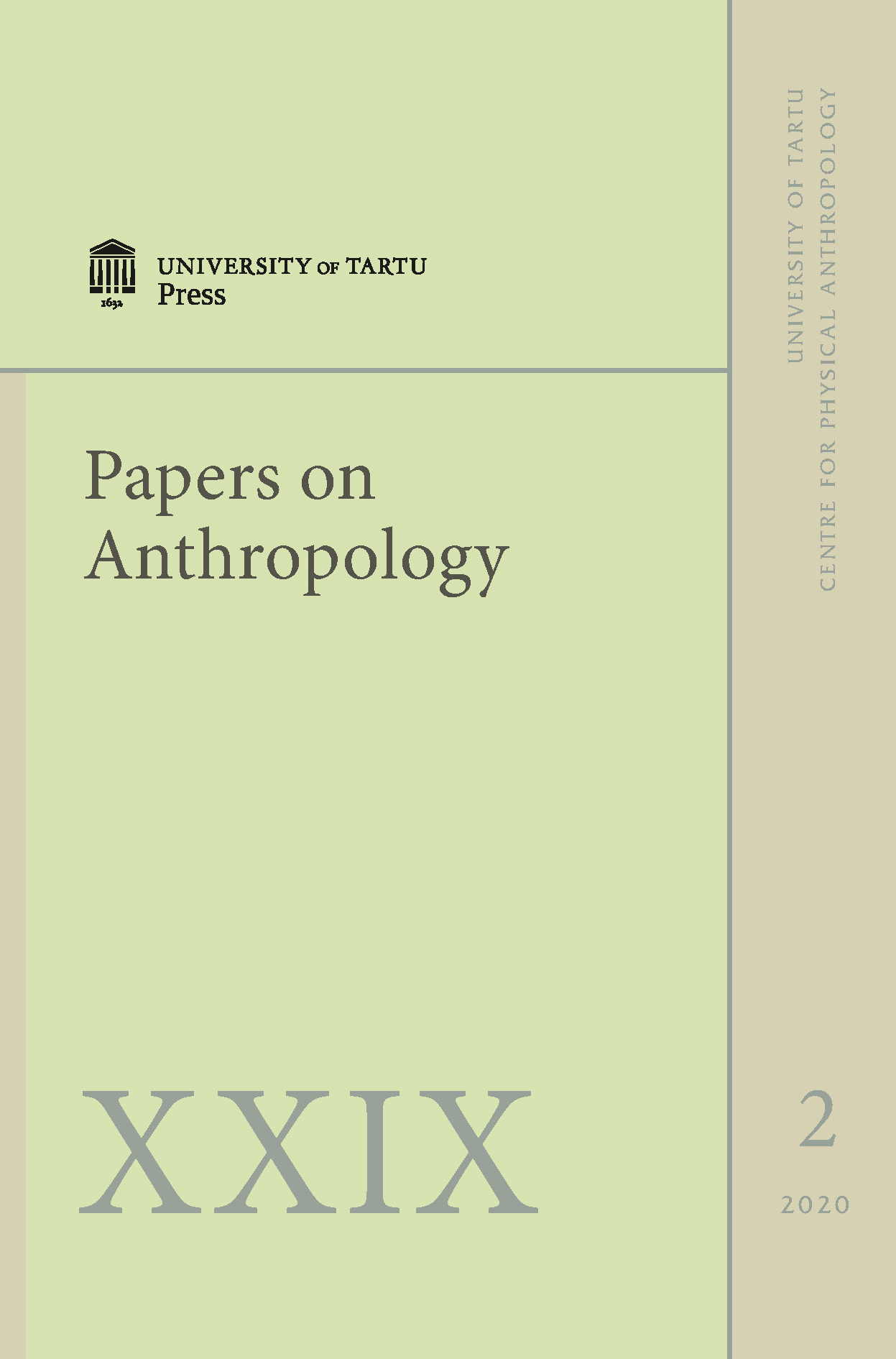Estimation of optimal obesity cut-offs among Tripuri and Halam women of Tripura, Northeast India
DOI:
https://doi.org/10.12697/poa.2020.29.2.07Keywords:
obesity, cut-offs, ROC, Youden Index, Tripuri, Halam, Northeast IndiaAbstract
Obesity is one of the risk assessments for various non-communicable diseases (NCDs), while anthropometric measurements are one of the measures of obesity, which has been demonstrated as a time-tested important technique for risk assessment of NCDs. Due to variation of anthropometric measurements, it seems difficult to classify obesity using world cut-offs in different population groups.
The objective of the present study is to discern the population-specific obesity cut-offs and the best obesity predictor among two indigenous ethnic groups (Tripuri and Halam women) of Tripura, North East India.
The subjects of the present study were 88 Tripuri and 98 Halam adult women whose anthropometric measurements were obtained by using standard techniques. The area under curve (AUC) and Youden index (YI) were used to evaluate the performance of each anthropometric adiposity indicator as well as optimal obesity cut-offs.
The age and waist-hip ratio (WHR) was significantly higher (p < 0.05) in Tripuris compared to Halams. However, no significant (p > 0.05) differences were observed in obesity categorized by body mass index (BMI) using the WHO 2004 cut-off between the populations. Waist stature ratio (WSR) (AUC = 0.959) and waist circumference (WC) (AUC = 0.804) were better obesity predictors for Halams and Tripuris respectively. The present study envisaged the optimal cut-off points, which were 84.95 cm for WC, 96.45 cm for hip circumference (HC), 29.95% for the percentage of body fat (PBF), 0.89 for WHR, 0.57 for WSR and 1.27 for conicity index (CI) in Halams, while for the Tripuris, the optimal cut-off points were 89.6 cm for WC, 97.5 cm for HC, 33.1% for PBF, 0.95 for WHR, 0.55 for WSR and 1.02 for CI.
In conclusion, the present study indicated the optimal anthropometric cut-offs which could be the redefined the parameters for assessment of obesity in Halam and Tripuri women.

